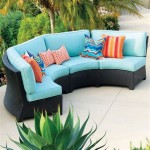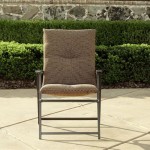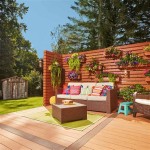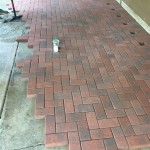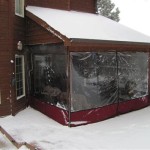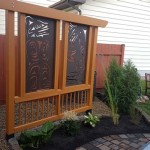Cool Shade for Patio Ideas: Creating Comfortable Outdoor Living Spaces
The patio, often envisioned as an extension of the home, provides a valuable outdoor living space for relaxation, entertainment, and connection with nature. However, the enjoyment of a patio can be significantly diminished by excessive sun exposure and heat. Implementing effective shading solutions is therefore crucial for transforming a patio into a comfortable and usable area, particularly during the warmer months. Several options exist, each offering unique benefits in terms of aesthetics, functionality, and cost. Careful consideration of these factors allows homeowners to select the most appropriate shading solution for their specific needs and patio design.
Understanding Shading Requirements and Patio Orientation
Before selecting a shading solution, it is important to assess the specific shading requirements of the patio. This involves considering the size and orientation of the patio, as well as the typical sun exposure throughout the day. A patio facing south or west will generally require more extensive shading than one facing north or east. Furthermore, the desired level of shade should be determined. Some individuals may prefer full shade, while others may prefer dappled sunlight or a combination of both. Understanding these factors is essential for selecting a shading option that provides adequate protection from the sun without completely blocking out natural light.
The orientation of the patio significantly impacts the amount of direct sunlight it receives. South-facing patios receive the most intense sunlight throughout the day, requiring robust shading solutions. West-facing patios experience intense afternoon sun, which can make them uncomfortable during peak hours. East-facing patios receive morning sun, which may be desirable during cooler months but less so during the summer. North-facing patios receive the least direct sunlight and may only require minimal shading. Taking these factors into account helps to tailor the shading strategy to the specific needs of the patio.
Beyond the direct sunlight, consider also the ambient temperature. Shading is not solely to block the light but to decrease the overall heat. Therefore, the materials used to provide the shading will impact its effectiveness. Dark materials can absorb heat and radiate it back into the patio area, negating some of the benefits of shading. Lighter-colored materials reflect sunlight and heat, helping to keep the patio cooler. Breathable fabrics allow for air circulation, preventing heat from becoming trapped under the shade structure.
The size of the patio also influences the shading requirements. Larger patios require larger shading structures or multiple smaller structures to provide adequate coverage. Smaller patios may be adequately shaded by a single umbrella or awning. When planning the shading, consider the placement of furniture and other patio features, ensuring that these areas are adequately protected from the sun. Furthermore, consider the potential for future additions or changes to the patio layout when selecting a shading solution.
Popular Shading Options: A Comparative Overview
Several shading options are available for patios, each with its own advantages and disadvantages. These options range from simple and inexpensive solutions like umbrellas to more permanent and elaborate structures like pergolas and pavilions. The selection of the most appropriate option depends on factors such as budget, desired level of shade, aesthetic preferences, and the structural requirements of the patio.
Umbrellas are a versatile and relatively inexpensive shading option. They are available in a variety of sizes, styles, and materials, making them suitable for a wide range of patios. Umbrellas can be easily moved and adjusted to provide shade where it is needed most. However, they typically only provide shade for a limited area and may not be suitable for larger patios. Furthermore, umbrellas can be susceptible to wind and may require a sturdy base to prevent them from tipping over. Cantilever umbrellas, which are supported by a side pole, offer a larger shade area and are less likely to obstruct views.
Awnings are another popular shading option, particularly for patios attached to the house. Awnings can be either retractable or fixed, providing flexibility in terms of sun exposure. Retractable awnings can be extended or retracted as needed, allowing homeowners to control the amount of shade on the patio. Fixed awnings provide permanent shade and are typically more durable than retractable awnings. Awnings can significantly reduce the amount of heat entering the house through patio doors and windows, potentially lowering energy costs. However, awnings can be relatively expensive and may require professional installation.
Pergolas are open-air structures supported by posts and beams, providing partial shade. They can be constructed from a variety of materials, including wood, metal, and vinyl. Pergolas are often used to support climbing plants, which can provide additional shade and create a natural, aesthetically pleasing environment. The amount of shade provided by a pergola can be adjusted by varying the spacing between the beams or by adding a fabric cover. Pergolas offer a balance between shade and sunlight, creating a comfortable outdoor living space. However, pergolas do not provide complete protection from the sun or rain.
Pavilions are similar to pergolas but typically have a solid roof, providing complete protection from the sun and rain. Pavilions can be constructed from a variety of materials, including wood, metal, and composite materials. They are often used as outdoor dining areas or entertainment spaces. Pavilions can be customized to match the style of the house and can significantly enhance the value of the property. However, pavilions are typically more expensive than other shading options and require professional construction.
Shade sails are a modern and stylish shading option that involves suspending fabric sails between multiple anchor points. Shade sails can be arranged in various configurations to create unique and visually appealing designs. They provide excellent shade and can be easily installed and removed. Shade sails are available in a variety of colors and materials, allowing homeowners to customize the look of their patio. However, shade sails may not be suitable for areas with high winds.
Implementing Shade Structures: Materials, Installation, and Maintenance
The selection of appropriate materials, proper installation techniques, and regular maintenance practices are essential for ensuring the longevity and effectiveness of patio shading structures. The materials used should be durable, weather-resistant, and aesthetically pleasing. The installation process should be carried out according to manufacturer’s instructions and local building codes. Regular maintenance, such as cleaning and repairs, will help to extend the lifespan of the shading structure and maintain its appearance.
Wood is a popular material for pergolas and pavilions, offering a natural and aesthetically pleasing look. However, wood is susceptible to rot, insect damage, and weathering. To protect wood shading structures, it is important to use pressure-treated lumber or naturally durable wood species such as cedar or redwood. Regular staining or painting will help to prevent moisture damage and maintain the appearance of the wood. Inspections should be conducted regularly to identify and address any signs of rot or insect infestation.
Metal is another popular material for shading structures, offering strength, durability, and low maintenance. Aluminum is a lightweight and rust-resistant option, while steel is stronger but requires protection from corrosion. Metal shading structures can be powder-coated to provide a durable and attractive finish. Regular cleaning with soap and water will help to remove dirt and debris. Inspections should be conducted regularly to identify and address any signs of rust or damage.
Fabric is commonly used for umbrellas, awnings, and shade sails. The fabric should be durable, weather-resistant, and UV-resistant to prevent fading and degradation. Acrylic fabrics are a popular choice for awnings and umbrellas due to their durability and resistance to fading. Shade sail fabrics are typically made from high-density polyethylene (HDPE), which provides excellent shade and UV protection. Regular cleaning with soap and water will help to remove dirt and mildew. Fabric shading structures should be stored properly during the off-season to prevent damage from wind and snow.
Proper installation is crucial for the stability and safety of shading structures. Umbrellas should be securely anchored to prevent them from tipping over in wind. Awnings should be installed by a professional to ensure that they are properly attached to the building. Pergolas and pavilions require careful planning and construction to ensure that they are structurally sound. Local building codes may require permits for certain types of shading structures. Following manufacturer's instructions and adhering to local building codes will help to ensure a safe and successful installation.
Regular maintenance is essential for extending the lifespan of shading structures. Cleaning should be performed regularly to remove dirt, dust, and debris. Inspections should be conducted to identify and address any signs of damage or wear. Repairs should be performed promptly to prevent minor issues from becoming major problems. Storing fabric shading structures during the off-season will help to protect them from damage. Following these maintenance practices will help to keep the patio shading structures looking their best and functioning properly for years to come.

10 Shade Ideas For Backyards Patios Extra Space Storage

26 Patio Shade Ideas To Help You Stay Cool Timbertech

Inspiration Top 5 Trends Outdoor Shade Ideas Patio

Boen Sunshade Sail Canopy 13 Ft X 10 Grey Rectangle Awning Uv Block For Outdoor Patio Garden And Backyard Sh 40054

Patio Shade How To My Outdoor Living Tips

11 Excellent Backyard Patio Shade Ideas To Upgrade Your Space Structureworks

Inspiration Top 5 Trends Outdoor Shade Ideas Patio

8 Stylish Shade Ideas For Your Backyard Lowe S

12 Beautiful Shade Structures Patio Cover Ideas A Piece Of Rainbow

11 Excellent Backyard Patio Shade Ideas To Upgrade Your Space Structureworks
Related Posts

